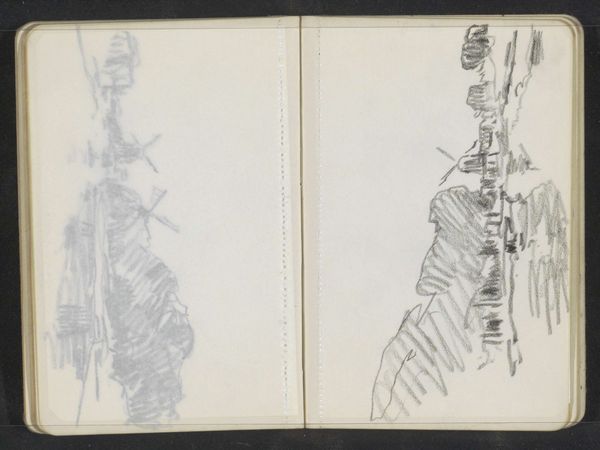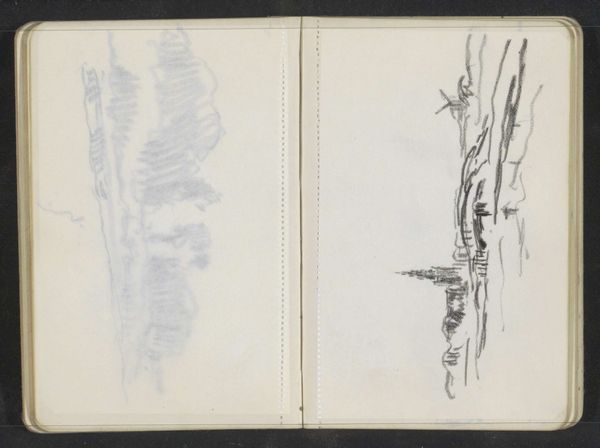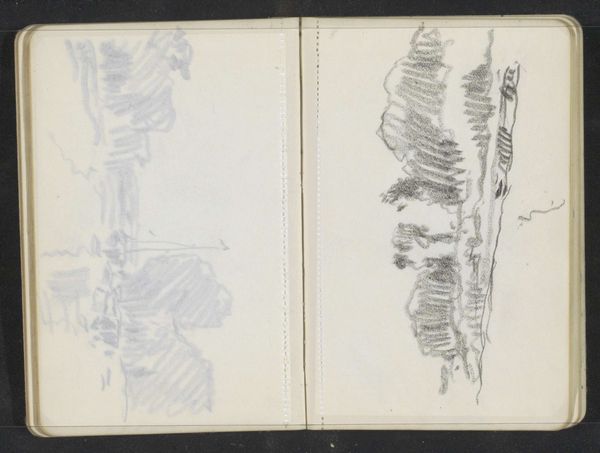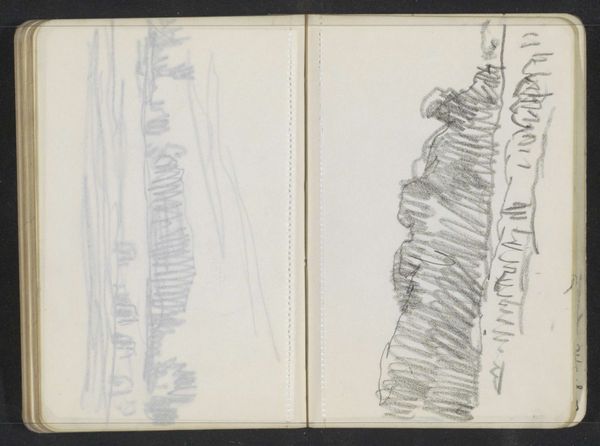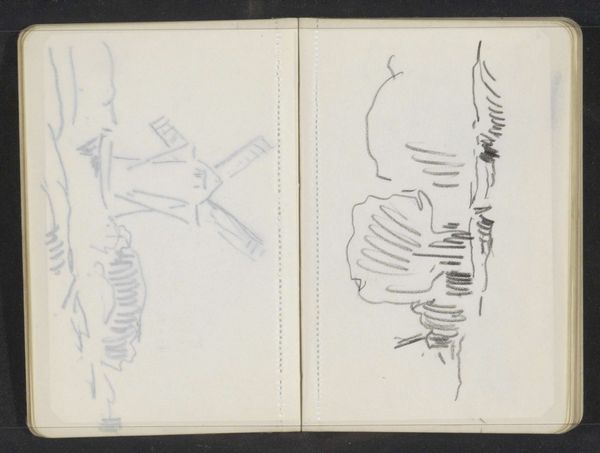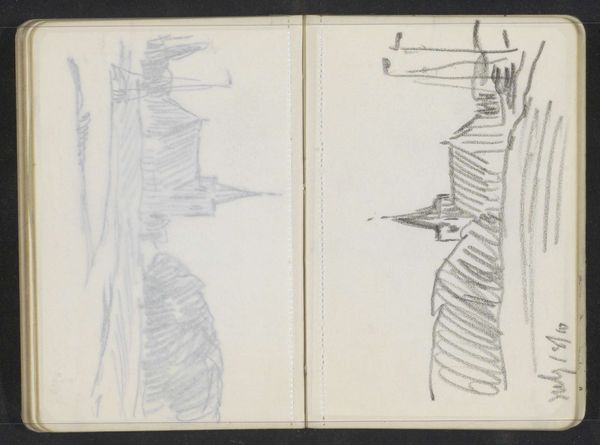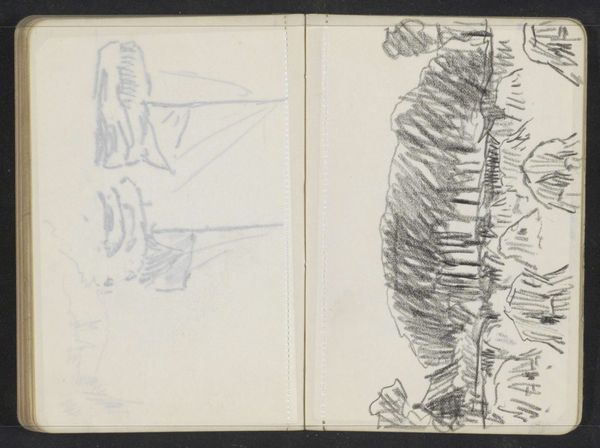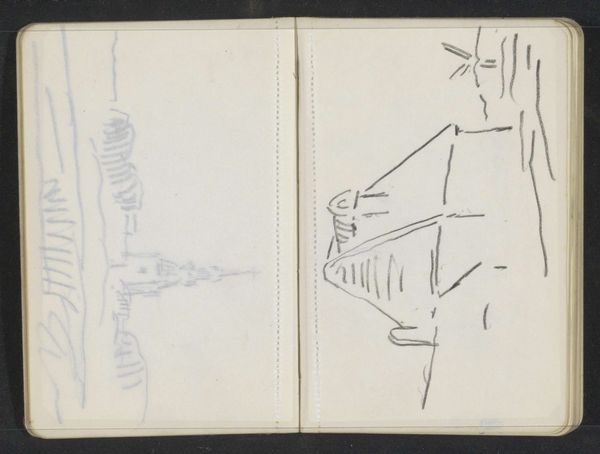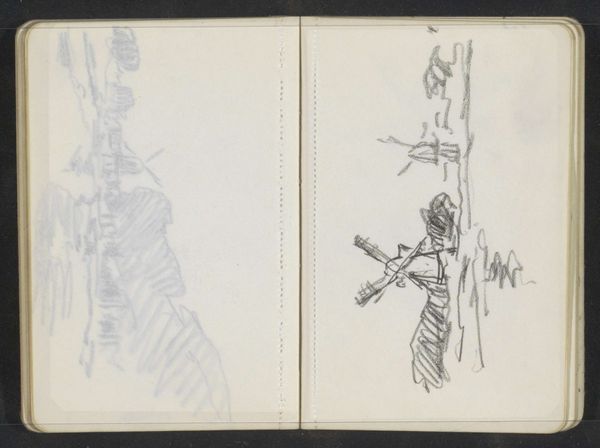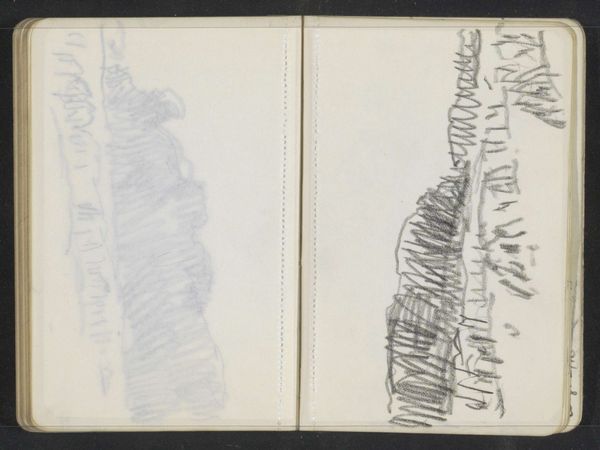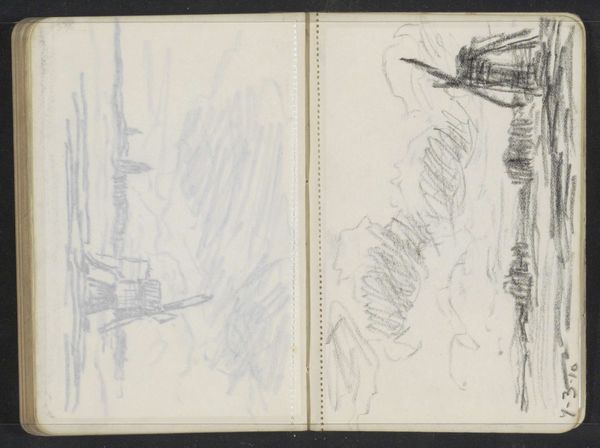
drawing, graphite
#
drawing
#
pen sketch
#
landscape
#
form
#
line
#
graphite
Copyright: Rijks Museum: Open Domain
Curator: Alexander Shilling’s "Landschap met molens aan het water", or “Landscape with Mills by the Water,” a graphite and pen sketch from circa 1909. Immediately I feel a sense of somber quiet emanating from this sketchbook spread. Editor: Yes, a pronounced stillness. The stark, economical lines certainly contribute. Let’s look at the composition itself. The contrast is intriguing—a lighter, more ethereal mill on the left page and a darker, more defined one on the right. We should acknowledge the way the artist contrasts media with pen and graphite marks, with the overall compositional framing devices operating within a found object. Curator: Precisely, that dichotomy speaks volumes. One can easily perceive the socio-economic dimensions as well. Windmills in that era represent not just idyllic scenes but vital sources of power—milling grain for bread, pumping water to irrigate fields, processes largely connected to agricultural labor of exploited workers, and water management controlled by oligarchs. Editor: Intriguing lens, although, focusing on pure form, the stark simplicity really stands out to me. Look at how Shilling utilizes hatching and cross-hatching on the right side. This rendering achieves such a profound tonal variation, giving the windmill’s structure and a grounded presence that's deeply satisfying from a pure artistic standpoint. I would encourage our listeners to focus less on class division, and more on the artist's intentional visual language. Curator: Well, art cannot divorce itself from its political origins! We might interpret the skeletal representation of mills—or perhaps more importantly— the absence of any people. Might they symbolize the oppressive forces at play that strip away agency and livelihood? Or how land and water use impacts labor and capital? These compositions certainly provoke discourse. Editor: Perhaps we should agree to differ on that, but ultimately it does suggest the importance of viewers and academics actively grappling with art objects, as the dialogue certainly elucidates complex elements and emotions, whether you value the history of the political subjugation of workers, or consider shading!
Comments
No comments
Be the first to comment and join the conversation on the ultimate creative platform.
